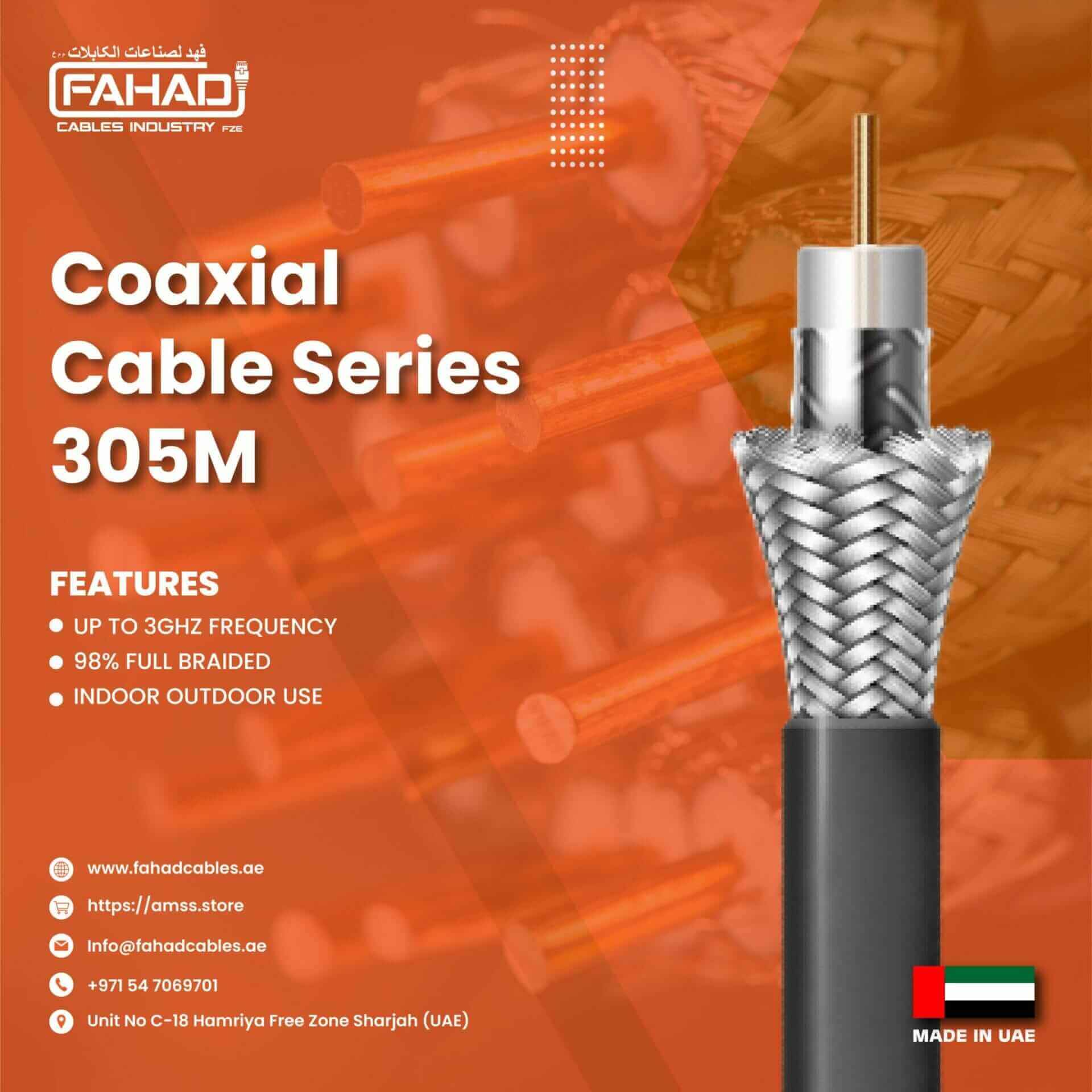fahad cables Coaxial Cable products range coaxial cable rg6 coaxial cable rg59 coaxial security cable alarm cable intercom cable rg58 coaxial cable cctv and speaker cable
FAHAD CABLES INDUSTRY FZE cat8 network cable 23awg 4Twisted pair SSTP has a full solution
on Structured cabling systems range of Coaxial Cable
network cable cat3 cat5e cable cat6 cable cat6a cable cat7 cable cat8 cable full copper
LSZH and pvc jacket Coaxial Cable Industrial and
Building Automation Cable
a full range of copper range Accessories cat6 ca6a cat7 Keystone jack utp and stp patch panels loaded and Unloaded
data socket
data patch cords cat8 cat6a utp and stp with fluke pass internal standard has Certified and
tested by UL Intertek IEC and Local authority Etisalat and DU.
bnc cable, rg58 Cable,rg58 coax cable, security cable wire,6 core security cable,
Retractable security cable, 4 core security cable
, security camera cable, Armoured fire alarm cable, alarm cable,2 core alarm cable,4 core alarm cable, power limited fire alarm cable,
access control cable, cables used for access control system, access control system cables, access control cable types, speaker cable,
, Intercom backbone cable, Intercom cable, fiber patch cord, fiber patch cord lc to sc, fiber patch cord sc lc,
fiber optic cable patch cord, sc sc fiber patch cord price, fiber cable patch cord, fiber optic patch cord cable,
single mode fiber patch cord,
single mode to Multimode fiber patch cord, fiber pigtail cable, single mode fiber Pigtails,
what is fiber pigtail, fiber pigtail, fiber pigtail Connector, pigtail fiber optic,
fiber pigtail sc
, fiber optic cable pigtail, fiber pigtail Assembly, sc apc simplex adapter, fc apc to sc apc adapter, sc apc adapter,
sc adapter single mode, lc female to sc male adapter, lc to sc fiber adapter, adapter lc duplex,
mpo to lc adapter, lc st adapter,
lc apc duplex adapter, lc to sc adapter, lc duplex adapter,
patch panel fiber
,2u fiber patch panel, fc fiber patch panel, sc fiber patch panel, fiber optic splitter, fiber optic splitter box,
fiber optic cable splitter, fiber splitter cable, optical network unit, onu optical network unit, odf fiber, odf fiber optic,
odf fiber price, patch cord sc sc duplex, lc duplex patch cord, sc lc single mode duplex patch cord,
, fiber optic cable types, dual core fiber optic cable, single mode fiber optic cable, single mode outdoor fiber cable,
multi mode fiber optic cable,os2 fiber optic cable, difference between om2 and om3 fiber cable, fiber cable om3 vs om4,
,om3 fiber optic cable,om4 fiber optic cable,om4 multimode fiber cables, ftth cable, ftth fiber optic cable,
ftth cable connection, ftth cable type, multi core fiber cable,
Network Cables Manufacturer
Fahad Cables Industries FZE is one of the most Reputable Manufacturers of network cables in the Middle East. Providing a happier, richer future through Providing solutions for copper and optical communication for the past 20 Years. Founded an ultra-high-speed,
multimedia world with full flash production facility in Sharjah Hamriya Free Zone
(United Arab Emirates) to facilitate you throughout the telecommunication world.
FAHAD CABLES INDUSTRY FZE

